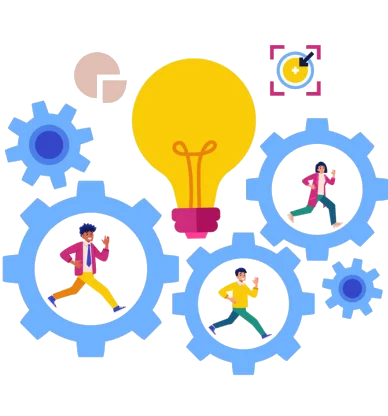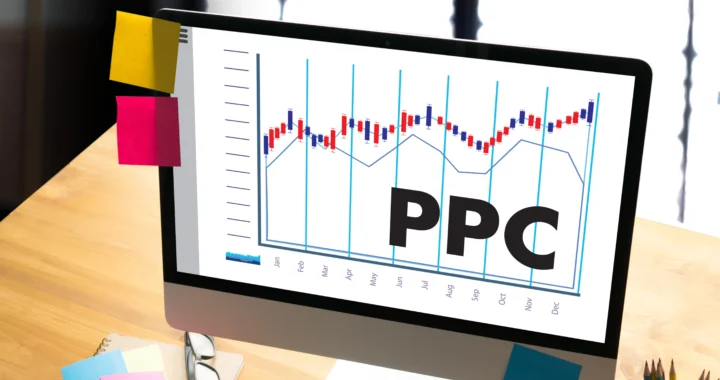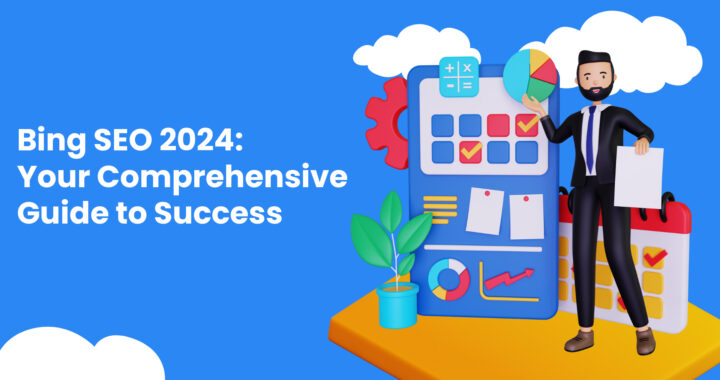Contents
Planning to migrate to a new website? Don’t do anything without reading this guide first. The website migration process becomes necessary when the old website is not performing as expected and cannot deliver the required user experience. Hence, instead of losing customers and visitors, migration to a new website design is pivotal.
Migrating a website design is a risky process, no doubt about it. However, when implemented correctly, you can minimize the risk of fallout and ensure effective results. Let’s learn more about the website migration process and how it must be done to ensure a smooth transition from the old to the new.
Understanding Website Migration and its Impact on SEO
A website migration process involves changing the website’s structure, design, navigation style, and framework and moving to HTTPS, among other things. Out of these, the major changes are seen in its design, structure, choice of framework, and all the related elements that come along.
As making changes to the design and framework have a big impact on the website’s performance, security, SEO, and functionality, it is important to do everything right. In addition to this, the new website might switch to the new server and change the domain name as well.
After making all these changes, the website’s SEO performance might also change. When it comes to SEO, when the changes are done accurately, SEO ranking will see a positive outcome.
Due to this, meticulous planning is important for making any sort of changes to the website, let alone changing its structure, server, domain name, URL structure, framework, etc.
How to Progress Smoothly from an Old to New Website Design?
Website design migration or a website redesign involves revamping the website in terms of its content, layouts, and navigation. The motive is to improve the aesthetic appeal of the website, its navigation, and layout with a motive to get better conversions and higher performance.

Website Redesign Process Plan and Steps
The first thing you need to do for migrating to a new website is to check everything good and bad about the existing website.
- Check the page designs and the traffic metrics of every page.
- Check the top-performing keywords of the existing website.
- Make a list of all the inbound linking domains.
- Keep a history of all the sales, conversions, subscriptions, etc., coming from the current website.
- Determine the pages that get the highest community engagement and traffic.
- Find out the pages that have the highest and lowest bounce rates.
To check all this, you can use Google Analytics, a tool that helps find answers to all the technical questions related to a website. With this information, you can build a bespoke website redesign project plan.
With this information, you need to complete the following;
Overview of the Current Website Design and Expectations from the New
- Usability: This shows whether the website design and its components deliver the intended results. Usability is checked from terms of its speed, convenience, intuitiveness, and responsiveness. You need to look at the challenges users might face when browsing through the website. Make sure to implement a design that takes care of all the challenges and ensures a smooth user experience.
- Content: Even though uploading effective content is a new exercise in itself, its relation with the design is also crucial. Content that merges with the design is good to look at and provides crucial information that visitors must read first. While redesigning the website, make sure to use heat mapping to find the best spots for content placement.
- SEO: A good design is one that works well and conforms to the SEO guidelines. You need a website design that is optimized to achieve a higher ranking in the SERPs.
Set the objectives you wish to achieve with the new design
The new design must be able to achieve all the objectives your business requires. As you answer the “WHY,” how you can approach the redesign exercise will become clearer.
The reason for changing the website design must not be because your competitors are doing so, or you think the visitors might get bored with the same old website. Remember that changing a website’s design can significantly impact your customer base and their approach toward your website.
Hence, before making any sort of change, make sure that it is required and will ultimately bore positive results. Website redesigning is not only about making the website look better, but it’s more about ensuring that the new design works.
Work on the Brand Identity and Message
The next step in the website redesign process is defining your brand identity and how you want to present it in front of the world. Aim for a crystal clear branding message and delivering a unique value proposition to the clients and customers. The goal is to ensure consistency across all the domains of your new website design and structure.
When executed correctly, a visitor will immediately know the purpose of your services, your offerings, and the benefits your products will bring to the customers. Having this information, the visitors will want to stay browsing on your website and not bounce off to the competitors.
While writing the message, use clear and concise language. As the attention span of people is getting shorter, you need to write in a way that grasps their interest quickly.

Understanding Your Users, Buyers, and Customers
Even if you already have built customer personas while designing your existing website, there is no harm in repeating the process.
As time passes, customers’ preferences change; hence your new design must have the required elements. For every visitor coming to your website, they need a direct answer to “what’s in it for me?”
To answer this question, you must first have an understanding of the buyer persona and draft your design and content around the same. Your website migration to a new design and structure must include the findings from creating buyer personas.

SEO Protection of the Existing Well-Performing Pages:
One of the major goals for a website redesign project plan is to get discovered easily on the web. This is where checking the SEO performance of each page is necessary. In this exercise, you will want to document the pages that get the highest traffick and most inbound links and convert the highest number of visitors.
These are your valuable pages, and you shouldn’t risk redesigning them entirely only to lose all the SEO value. Instead, use a 301 redirect strategy. In this, you will create 301 redirects of old to new URLs of the high-performing pages.
Make a spreadsheet and list all the 301 redirects. Ensure that you have the technical expertise to complete this step. If you need to hire someone for the same, do it. The cost of building a page’s SEO ranking from scratch is much higher than spending on hiring the technical expertise to work on 301 redirects.
Identify the Gaps in Existing Website’s Content and Keyword Research
A core part of the website redesign process is finding the correct keywords and adding interactive content. We cannot separate good content from good design as both of them work together. For great content, start with keyword research and pick one keyword for each new page or topic.
With the keywords decided, make sure to include them in the content as per the latest guidelines and best practices. Plus, implement the best on-page SEO practices while writing the content.
Competition Analysis
There is a difference between obsessing over your competition and comparing your website to create a better one. The whole crux of doing competition analysis is to identify everything wrong with your competitor’s website and ensure you don’t make the same mistakes.
Check the keywords they have used, look at the design, the navigation, and how they are attracting visitors. You can take the help of diagnostic tools for this purpose and check their strengths and weaknesses.
When you understand your competition, you can create a website that your customers come to when they are not satisfied with the competitor’s website. You need to set yourself apart from the competition so visitors can identify your brand’s uniqueness.
Working with this approach, we want you to build a user-centered design. The new website design must adhere to your user’s preferences, complete their requirements, and deliver a smooth user experience.
In addition to this, build a responsive website design as a major chunk of the visitors will come to your website from mobile. More than 58% of all website traffic comes from mobile devices. We can hope that this number will increase in the future; hence your website design must adhere to future trends as well.
The Website Redesign Phases and Roadmap
1. Content and SEO
Begin by working on revamping or creating a new SEO strategy. Include the 301 redirect, content placement, keyword research, content formation, and other parts we have discussed in this phase.
To give you an overview of this phase, begin by taking a closer view on the existing website SEO structure and its content. Evaluate the content and on-page and off-page SEO of each website page.
Find a specific keyword for each page you are planning to introduce in the new website design. Rewrite the content or hire copywriters to work on it from scratch.
2. Designing
This is the longest part of the entire exercise. Begin by creating wireframes and prototypes of the design. Check every aspect of the design before forwarding bringing in the coding experts.
In this phase, we also want you to conduct usability tests and find out whether your website satisfies all the performance parameters. While designing, always keep in mind the user-centered design approach.
3. Development
This is the phase where your website’s new design is converted into code. The empty pages or shells are given the right design, color, typography, URL structure, etc., according to their placement on the sitemap.
Here, the developers also work on the functionalities and features of the website. To ensure a smooth completion of the web development phase, ensure that the design and development are always in sync and communicate regularly.
4. Testing and Deployment
The last stage of website migration is testing the new website in terms of its functionality, security, and performance. The testing phase also includes testing whether the website works on every browser and its versions. It includes testing whether the website meets all the security requirements and the latest development standards.
A successful website redesign exercise bears fruit when the new design works smoothly and brings more conversions. Ultimately, we build a website to get more attention from the target audience.
Conclusion
A website redesign exercise is successful when you get the results you desire. To ensure this, you need to be clear about your objectives before starting the exercise. A thorough website design audit and identifying the gaps are necessary to work on the new website design.
Build a website that is better in terms of design, content quality, SEO, and every other aspect. Build roadmaps, and leverage the latest technology and tools to bring efficiency and speed into your website redesign project.
For quick and efficient results with website migration, you can reach out to us and bring in the experts to do the job for you.



